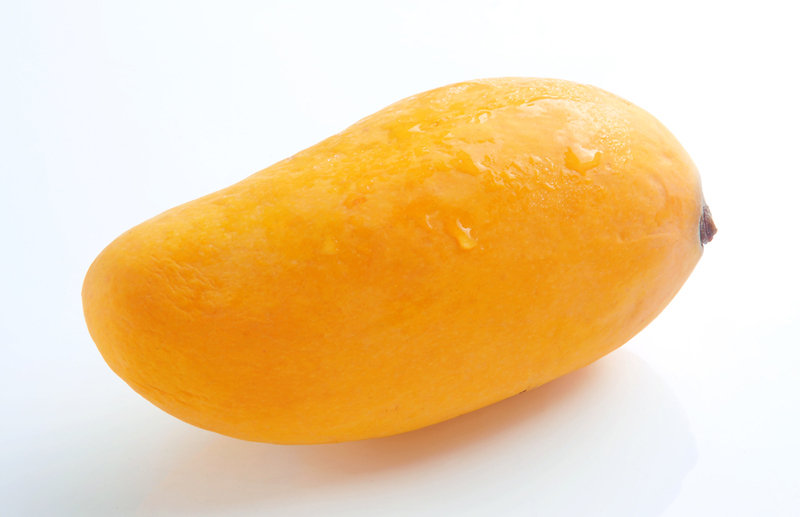In the 19th century Mirza Ghalib, the great Urdu/Persian poet, immortalized the mango in his beautiful verses, describing it as the “king of fruits” and extolling qualities such as its exotic aroma and its honey-sweetness. It shines at every feast, for rich or the poor alike.
Mangoes are not only Pakistan’s national fruit, they are also part of culture, a networking tool, an instrument of social bonding and a diplomatic emissary worthy of being gifted to dignitaries all over the world.
At this time of the year, the renowned Chaunsa variety has arrived in the Kingdom, following on from the Sindhari, which ripens earlier. They are just two of 1595 known varieties of mangoes known. Other commercially produced varieties in Pakistan include Langra, Dasehri, Anwar Ratool, Samar Bahisht and Desi.

Pakistan's “king of fruits”. (Shutterstock)
The Chaunsa mango is known as one of the best in the the world. It is now grown in a number of places around the world, but originated in Rahim Yar Khan and Multan in Punjab. It is unusually sweet, with a wonderful fragrance, and has delicious, soft, succulent flesh with the a minimum of fiber. From the outside it might not look like a thing of beauty — it usually has a pale, matte-yellow appearance — but inside the thin peel lies a delight waiting to be discovered.
While the Chaunsa is considered by many to be the best mango, any Pakistani variety tastes sublime. It is also a very versatile fruit. Eaten with a paratha, it makes for a complete meal. A mango lassi (curd shake) in the morning provides an energy boost that will help to see you through the day. A mango salad for lunch and another lassi in place of afternoon tea will pep you up if you start to flag. Mangoes are also used to make ice-cream, squashes, juices, chutneys, pickles, puree and are sold sliced in syrup.
You don’t have to travel all the way to Pakistan to enjoy Pakistani mangoes; they are readily available in most food stores in the Kingdom. Pakistan produces nearly a million metric tonnes of mangoes a year and ranks as the fourth-largest exporter in the global market.
Pakistani mangoes are primarily consumed in the ethnic (Asian) consumer segment, but there is a growing trend of exports to North America and Europe, premium import markets with a 62 percent share in global mango imports.
The export potential of mangoes continues to grow, thanks to improvements in the cultivation, harvesting, packing and marketing processes.














